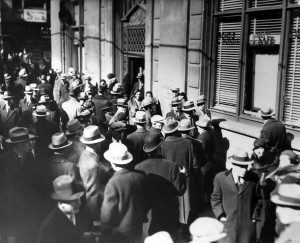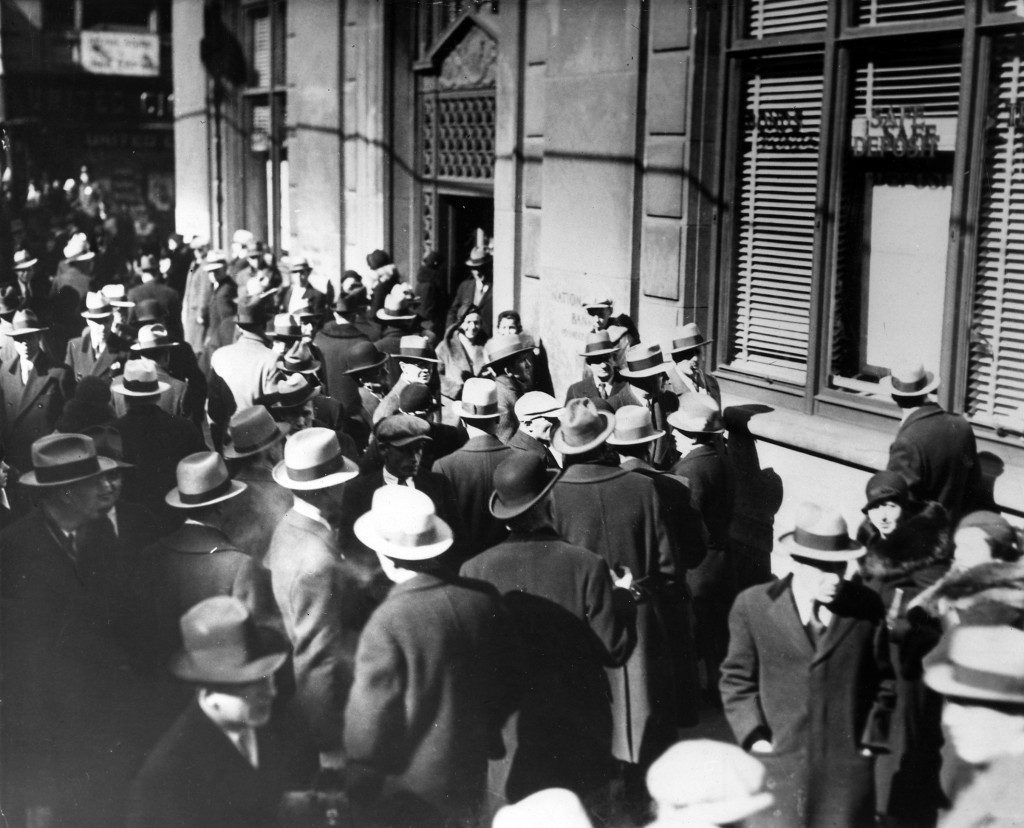
In today’s complex financial landscape, the central bank plays a pivotal role in shaping economic policy, managing the nation’s money supply, and stabilizing the banking system.
Originating with the Central Bank began in 1913 commonly known as The Federal Reserve Act of 1913. The Act’s predecessor was the 1907 Banking Panic. Was established to curb the chaos of banking panics and to provide a more predictable monetary environment. Yet, despite its foundational role in our economy, many remain unclear about how it affects their personal finances and how they can navigate around its influence.
As we delve deeper into the workings of central banks, it’s crucial to explore alternative financial strategies that not only provide stability but also empower individuals to take control of their financial destinies. One such strategy is the concept of Infinite Banking through Whole Life Insurance—a method that allows individuals to operate their own banking system and enhance their financial autonomy.
This article will guide you through the historical journey of the central bank, its impact on today’s economy, and how you can leverage Whole Life Insurance to transform your financial landscape, creating opportunities for growth and independence that were previously unimaginable.
The Historical Journey of the Central Bank
The concept of a central bank became appealing in the late 1800s as the U.S. economy expanded and modern banking practices became more understood by financiers. Early banking was marked by unregulated fractional lending by goldsmiths, which led to frequent bank failures during the gilded age and early 20th century. The establishment of the central bank was a move to organize and regulate this fractional lending.
The Central Bank Today
In the information age, some practices of the United States Central Bank may seem outdated. The debate that “the rich keep getting richer” mirrors some of the criticisms of central banking. The bank makes money by lending out depositors’ money at an interest rate, a practice enabled by its conglomerate nature.
Economic Impact and Misleading Indicators
The U.S. economy heavily relies on credit. Infusions of capital supposedly stimulate growth, yet this often involves creating money from nothing, leading to economic imbalances and misleading indicators that can cause poor financial decisions.
The Role of Central Banks in Your Financial Life
Central banks like the U.S. Federal Reserve were established to stabilize the economy. However, their policies often lead to boom-and-bust cycles, inflation, and unpredictable market conditions—challenges that can disrupt long-term financial planning.
For example, when interest rates drop, borrowing becomes cheaper, but savings accounts and conservative investments generate lower returns. When inflation rises, the purchasing power of money declines, affecting your cost of living and retirement plans.
While you can’t control central bank policies, you can create financial certainty with strategies that are not dependent on interest rates, stock markets, or government decisions.
How Whole Life Insurance Provides Stability in an Uncertain Economy
A key component of financial independence is having an asset that grows with certainty, provides liquidity, and offers tax advantages—all of which are fundamental to Whole Life Insurance.
1. Guaranteed Growth and Protection
Whole Life Insurance policies from mutual insurance companies provide guaranteed cash value growth and a contractual death benefit, ensuring long-term financial security for you and your loved ones. Unlike market-based investments, this growth is not subject to stock market fluctuations or interest rate changes.
2. Liquidity Through The Family Bank Strategy
With Whole Life Insurance, you can access your cash value through policy loans, without penalties or unnecessary taxation. This strategy—known as The Family Bank—allows you to:
- Borrow against your cash value instead of relying on traditional bank loans.
- Finance major purchases or investments while keeping your money working for you.
- Create a financial buffer during market downturns, helping you avoid selling investments at a loss.
“What this means for you is that instead of being at the mercy of interest rate hikes or stock market crashes, you control your liquidity and cash flow.”
3. Tax-Advantaged Growth and Legacy Planning
Unlike traditional savings or investment accounts, Whole Life Insurance cash value grows tax-deferred and can be accessed strategically to minimize tax liabilities. The death benefit is generally income-tax-free to beneficiaries, providing a financial legacy that bypasses probate.
“This means you can build and pass down wealth efficiently—without the uncertainty of future tax law changes or market instability.”
How the Wealthiest Families Protect Their Financial Future
When most people think about Whole Life Insurance, they see it as just a financial safety net—something that provides for loved ones after they’re gone. But for the wealthiest families, banks, and corporations, Whole Life Insurance is far more than just protection—it’s a strategic financial asset that builds and preserves wealth for generations.
The same institutions that promote traditional financial advice—banks, Wall Street firms, and large corporations—don’t follow that advice themselves. Instead, they use high-cash-value Whole Life Insurance to create liquidity, reduce risk, and ensure financial stability.
What if you could apply these same strategies to your own financial plan?
Let’s explore how the wealthiest individuals and businesses leverage Whole Life Insurance to control capital, maximize returns, and build lasting financial security.
1. Why Banks Buy Whole Life Insurance
It’s no secret that banks make money by lending out deposits at higher interest rates than they pay to savers. But what many people don’t realize is that banks also hold billions of dollars in Whole Life Insurance as a core financial asset.
Bank-Owned Life Insurance (BOLI):
- Major banks invest heavily in Whole Life policies because of their guaranteed growth, liquidity, and tax advantages.
- These policies allow banks to store capital in a low-risk, high-certainty environment while still having access to liquidity.
- Banks also use BOLI to fund employee benefits and executive compensation, ensuring long-term financial stability.
Example: As of recent years, U.S. banks hold over $200 billion in Bank-Owned Life Insurance. If the institutions that manage money for millions of Americans trust Whole Life Insurance to grow and protect their own capital, doesn’t it make sense to explore the same strategy for your personal wealth?
2. How Businesses Use Whole Life Insurance for Executive Compensation
Corporations don’t just rely on stocks and pensions for their most valuable employees. Many of the world’s top companies use high-cash-value Whole Life Insurance as a key part of their financial planning.
Corporate-Owned Life Insurance (COLI):
- Businesses leverage Whole Life Insurance to create tax-efficient retirement and compensation plans for executives.
- Unlike 401(k)s, Whole Life policies offer guaranteed growth and flexible access to cash—without market risk.
- The death benefit provides a financial safety net, while the cash value grows tax-advantaged for use in business operations.
Example: Fortune 500 companies often self-fund their retirement programs through Whole Life Insurance policies rather than relying on traditional pensions. This approach creates certainty in uncertain markets while preserving wealth across generations.
3. How the Wealthiest Families Build Generational Wealth
One of the biggest myths about Whole Life Insurance is that it’s only useful for estate planning. But wealthy families don’t just use it to pass down money—they use it to keep money in motion and maintain financial control for generations.
The Rockefeller Strategy:
- The Rockefeller family structured their financial system around Whole Life Insurance to ensure their wealth remained within the family.
- Instead of simply passing down assets, they created a family banking system that allows future generations to borrow against the family’s wealth rather than relying on traditional banks.
- This strategy ensures that wealth continues to grow while being used productively—financing education, real estate, and investments without depleting capital.
How It Works for You:
- You can create your own family bank using Whole Life Insurance cash value.
- Family members can borrow against policies to fund businesses, real estate, or personal growth opportunities.
- Instead of paying interest to a bank, the family bank recycles wealth internally, ensuring assets continue to grow while being used.
What This Means for You
Whole Life Insurance isn’t just for the ultra-wealthy—it’s a proven financial strategy that banks, businesses, and families use to build lasting financial security.
- Liquidity & control: Unlike retirement accounts, you can access cash value anytime without restrictions or penalties.
- Guaranteed growth: Whole Life policies provide consistent, tax-advantaged growth, regardless of market conditions.
- Multigenerational wealth: Instead of depleting assets, your family can keep money in motion while maintaining control over financial decisions.
“What this means for you is that you can apply the same financial principles used by the wealthy to create lasting financial security for yourself and your family.”
How Whole Life Insurance Creates Generational Wealth
Leaving a financial legacy isn’t just about passing down money—it’s about ensuring future generations have the principles, structure, and financial tools to sustain and grow wealth. The wealthy don’t just accumulate assets; they create systems that keep wealth in motion while maintaining control.
One of the most effective ways to achieve this is through The Family Bank Strategy, using Whole Life Insurance as the foundation.
1. The Family Bank Strategy: Keeping Wealth in Motion
Rather than handing down lump sums that can be quickly depleted, The Family Bank Strategy allows families to lend capital within the family, ensuring wealth is preserved and expanded.
- Whole Life Insurance builds a growing cash reserve that family members can access through policy loans for home purchases, business investments, or education—without relying on traditional lenders.
- Loans are repaid into the family bank, recycling wealth rather than sending interest to banks.
- This system teaches financial responsibility while ensuring future generations have both financial resources and financial education.
2. Tax-Efficient Wealth Transfer
Estate taxes, probate, and legal fees can significantly reduce an inheritance. Whole Life Insurance offers a tax-efficient way to transfer wealth by ensuring:
- Tax-free death benefit: Heirs receive the full amount without income tax liabilities.
- No probate delays: Unlike real estate or investments, funds transfer immediately to beneficiaries.
- Asset protection: Wealth remains intact, avoiding government interference or creditor claims.
3. Family Financing Without Banks
Instead of borrowing from external lenders, future generations can finance major life goals through the Family Bank, keeping money within the family.
- Buy a home without a bank mortgage.
- Start a business without restrictive loans.
- Fund education without accumulating student debt.
This approach keeps capital under family control, fostering financial independence while ensuring wealth continues to grow.
Creating Financial Independence That Lasts
The financial system is designed to benefit banks, corporations, and government programs—not individuals. Relying on traditional methods like savings accounts, 401(k)s, or government benefits leaves your wealth exposed to market volatility, tax uncertainty, and institutional control.
The wealthiest families and institutions understand this, which is why they use Whole Life Insurance to create financial certainty, liquidity, and lasting generational wealth. By adopting The Family Bank Strategy, you can take control of your financial future—building a system where your money grows, remains accessible, and benefits your family for generations.
The choice is yours: Continue relying on a system designed for others’ gain, or implement a strategy that prioritizes your financial independence, stability, and legacy.
If you want to create a financial future that isn’t dictated by market swings, tax hikes, or banking restrictions, it’s time to take action.
Schedule a consultation with a Paradigm Life Wealth Strategist today and discover how Whole Life Insurance can help you achieve financial freedom—on your terms.
Read: Austrian Economics : For a Failing Economy







